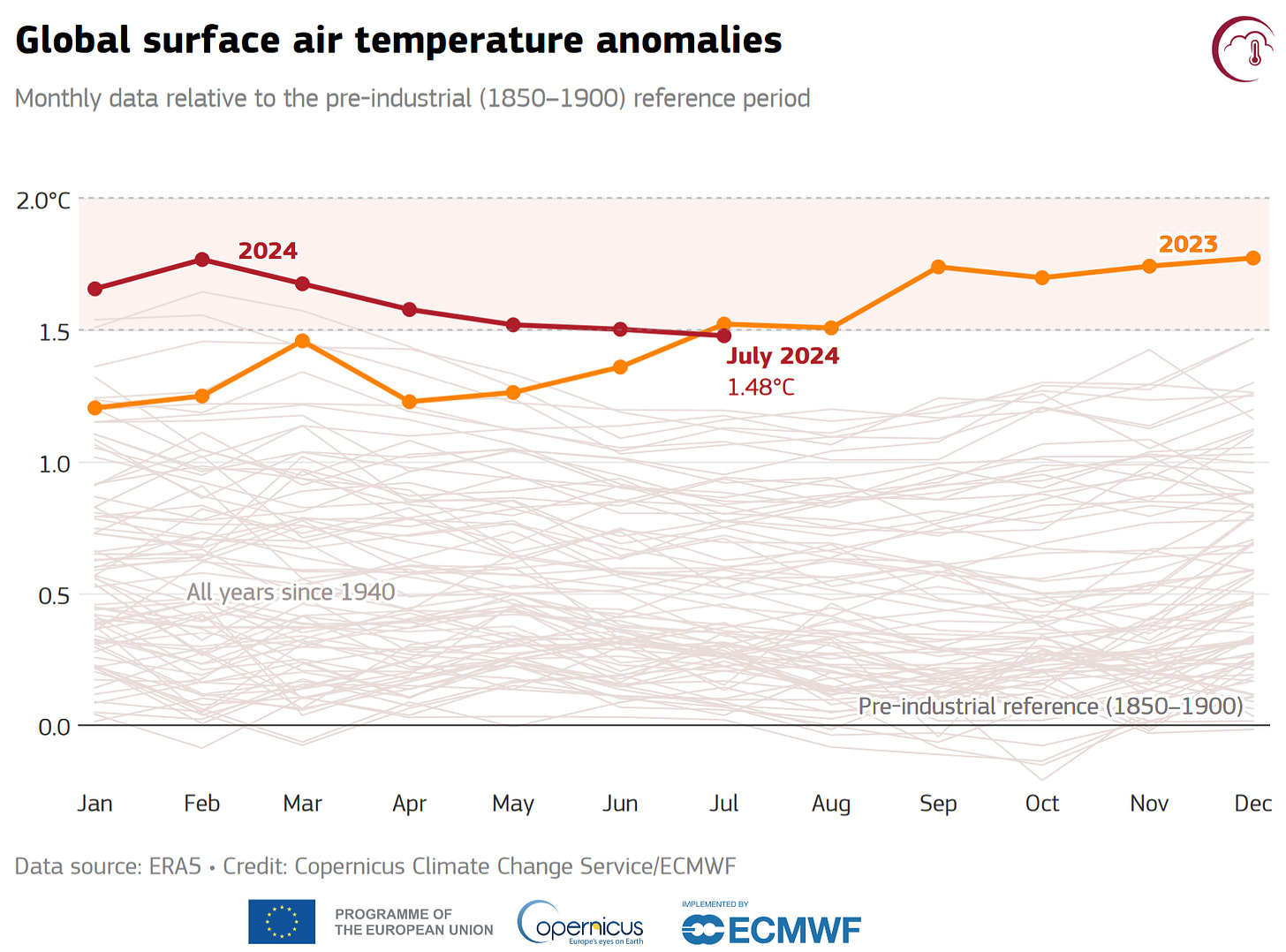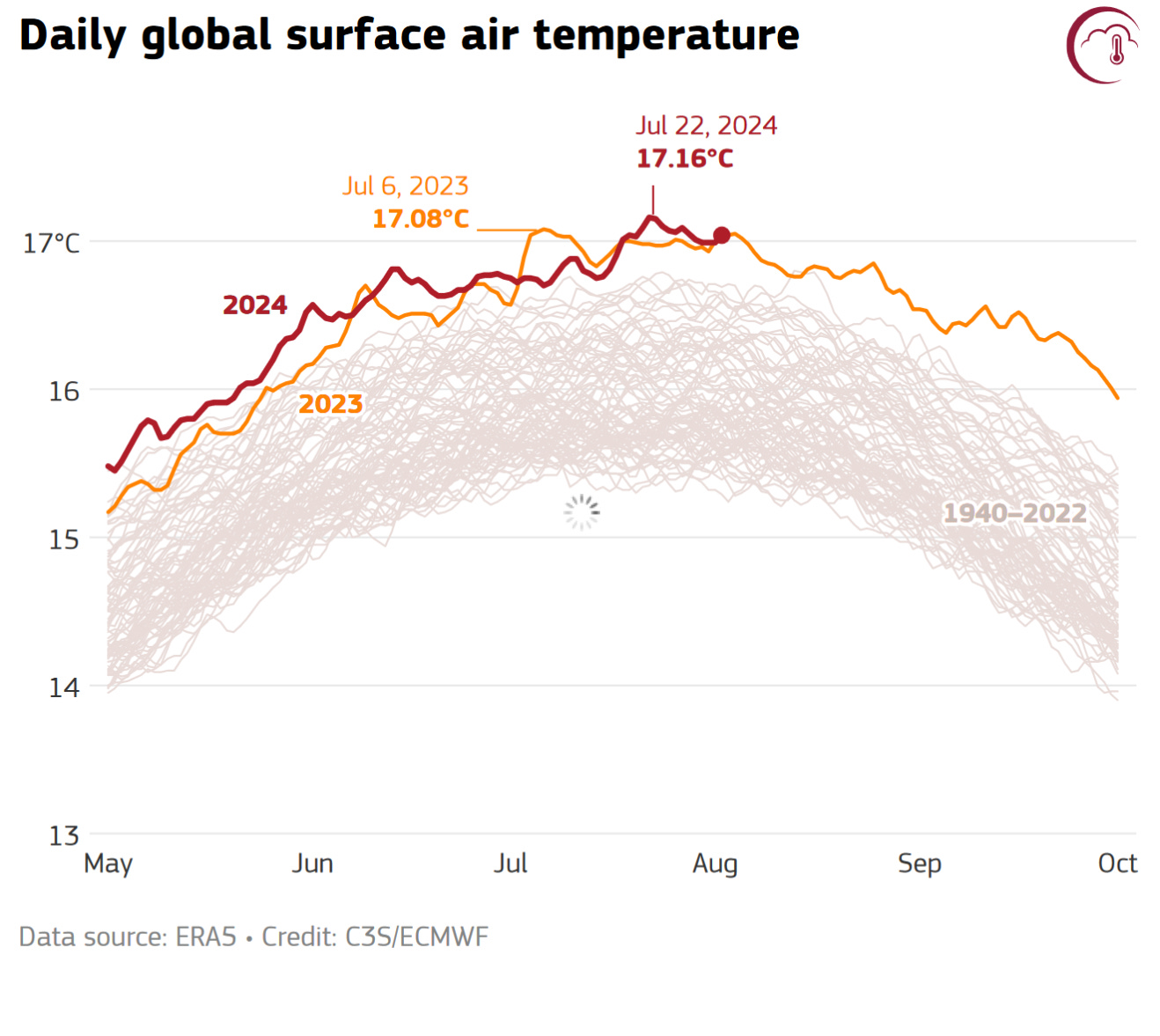July 2024 Becomes Second-Hottest Month on Record, Narrowly Missing Top Spot
Headlines from a Warming World No.17

Today, Copernicus data shows the streak of record-breaking months has ended, albeit narrowly. Globally, July 2024 ranked as the second-warmest July and the second-warmest month globally on record, being only 0.04°C cooler than July 2023. The average surface air temperature for July 2024 was 16.91°C, which is 0.68°C above the 1991–2020 average for July.
This marks the end of a 13-month period during which there was a new high in the ERA5 data record for its respective month of the year. Such a prolonged streak is rare but not unprecedented; a similar trend occurred in 2015/2016 during the last strong El Niño event.
In 2016, the global average temperature was about 1.1oC above pre-industrial levels. As for now, it’s about 1.48°C above the pre-industrial average (1850–1900). In the last 12 months (August 2023 – July 2024), the global average temperature has been 0.76°C above the 1991–2020 average and 1.64°C above the pre-industrial average.
Although July 2024 was marginally cooler than July 2023, it included two of the hottest days in recent history, according to the Copernicus Climate Change Service (C3S) data. On 22 July, the daily global average ERA5 temperature reached 17.16°C, slightly exceeding the 23 July temperature of 17.15°C. Given the minuscule difference, Copernicus cannot say which of two days was the hottest with complete certainty. Not that this makes any difference; the implications remain unchanged.

The main issue remains clear: our climate is getting warmer. The devastating effects of climate change have been evident for years and will continue to worsen unless we drastically cut global greenhouse gas emissions. The effects of climate change are real, and they are already happening. Even if we were to stop all emissions today, some changes are unavoidable. However, the sooner we cut emissions, the less severe these changes will be.
Regional temperatures
(Source: Copernicus Climate Change Service)
The average European temperature for July 2024 was 1.49°C above the 1991-2020 average for July, making the month the second warmest July on record for Europe after July 2010.
European temperatures were most above average over southern and eastern Europe, but near or below average over northwestern Europe.
Outside Europe, temperatures were most above average over the western United States and western Canada, most of Africa, the Middle East and Asia, and eastern Antarctica.
Temperatures were below average over western Antarctica and parts of the United States, South America, and Australia.




